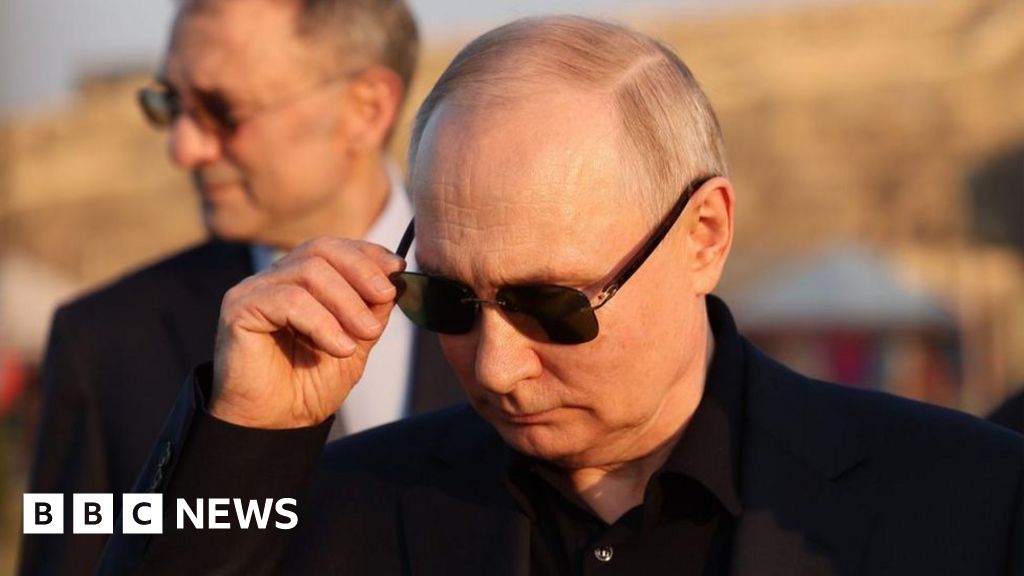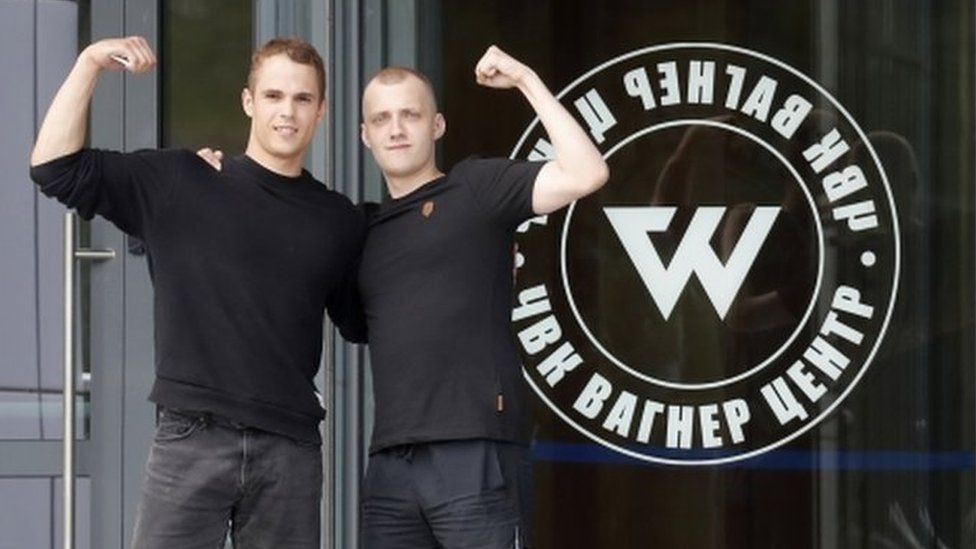This video can not be played
To play this video you need to enable JavaScript in your browser.
Where’s Vladimir Putin? That’s what we were wondering most of Monday – two days after a dramatic insurrection by the Wagner Group that saw a convoy of mercenary fighters headed to Moscow.
A spokesman for Mr Putin announced a deal to end the Wagner mutiny late on Saturday. But when would the president himself comment on the controversial agreement?
It was controversial because the Wagner mercenaries had rebelled, seized military sites (with apparent ease) and then marched on Moscow; Russian air force pilots had been killed in the mutiny. Yet the Kremlin had agreed not to prosecute Wagner fighters or their leader Yevgeny Prigozhin in return for calling off the uprising.
Over the last week, President Putin has made a series of unusual public appearances – all televised – in an apparent attempt to steady the ship.
Monday: Addressing the nation
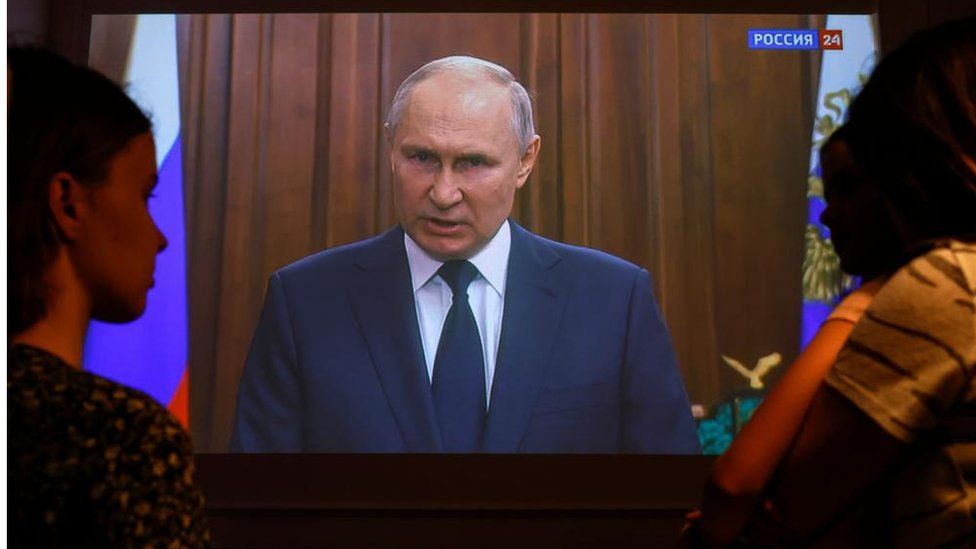
On Monday we hear from Mr Prigozhin: an audio message posted online presenting his side of the story. He says his men headed to Moscow to “hold to account” those leaders he blamed for “mistakes” in the Ukraine war.
Then late into the evening, an announcement is made. “Standby: President Putin will address the nation.” Now it feels like the Kremlin leader is playing catch-up.
Putin appears on TV screens after 10pm. A late-night address from him is very unusual. Social media buzzes with rumours that this will be a speech that will “decide the fate of Russia”. With trepidation we switch on Russian TV to hear the president speak.
It quickly becomes clear this address will not decide the country’s fate. There are no major announcements. But the five-minute speech does provide clues to how the Kremlin is going to spin the dramatic events of the weekend to its benefit.
Putin paints a picture of a Russia that has united to defeat the treachery of Wagner’s leaders.
He tries to bring everyone on side: he thanks the Russian public, Russian officials, religious leaders, the Russian armed forces and his security services. He distinguishes between the leaders of the mutiny and regular Wagner fighters and commanders, whom he praises as patriots. Crucially, he presents himself as the man who averted major bloodshed.
“As soon as these events began to unfold,” he says, “in keeping with my direct instructions, steps were taken to avoid spilling blood”.
Remember that controversy I was talking about? He doesn’t address that. But, hey, Russia has stepped back from the brink. That’s the main thing.
Tuesday: Facing the troops
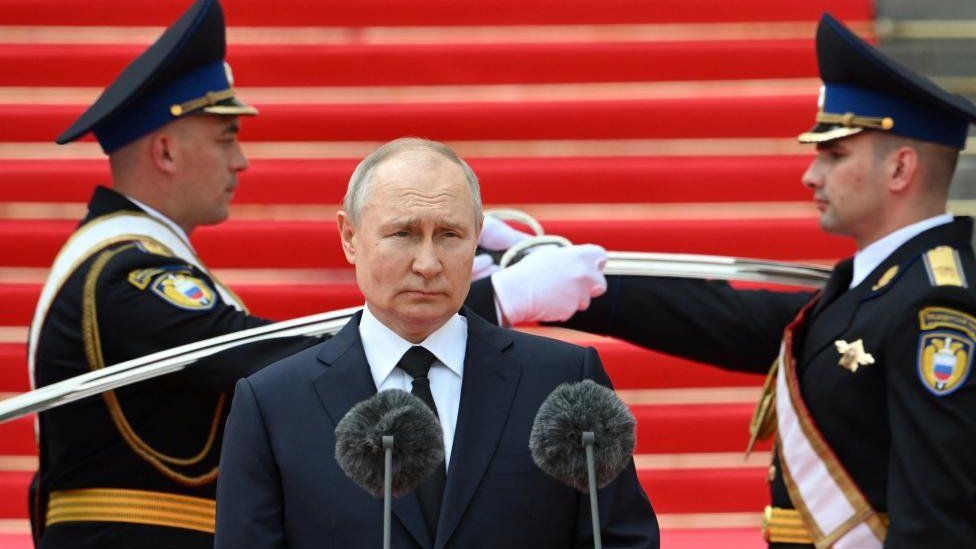
On Monday he was playing catch-up. By Tuesday morning it’s full steam ahead to try to restore his authority.
At a hastily arranged event the Russian authorities are going heavy – very heavy – on the pomp and ceremony. Some 2,500 soldiers, Russian Guard and security officials are lined up on the Kremlin’s Cathedral Square. This is the site of coronation (and funeral) processions of Russian tsars.
Cue Putin: To the presidential fanfare he descends the many steps of the Kremlin down onto the square (red carpet all the way, of course) and with a backdrop of the onion domes of Kremlin cathedrals the president – and commander-in-chief – delivers a speech to his troops.
But even before he starts to speak, the imagery says it all. It’s all here in one place: the Orthodox Church, the Kremlin, the president and the army. It reminds me of the old Imperial Russian slogan: “For faith, for the Tsar and the Fatherland.”
In other words, the visual messaging here is all about presenting Russia as a country uniting behind Vladimir Putin. It’s almost as if they want Russians to think that the Church, the military, and the president are interlinked, even part of one whole.
In his brief address, President Putin again claims that Russian society has come together after the Wagner mutiny. But most of what he says is praise for his military for “stopping a civil war”.
There’s a minute’s silence for the air force pilots who were killed. The president is paying his respects, but still not addressing the question of why Wagner fighters are not being prosecuted over their deaths.
Speech over. Cue the national anthem and a gun salute.
Overall message: the president’s not only in charge. With the help of the Russian army and the Russian people, he’s just scored a great victory.
Wednesday: Up close and personal
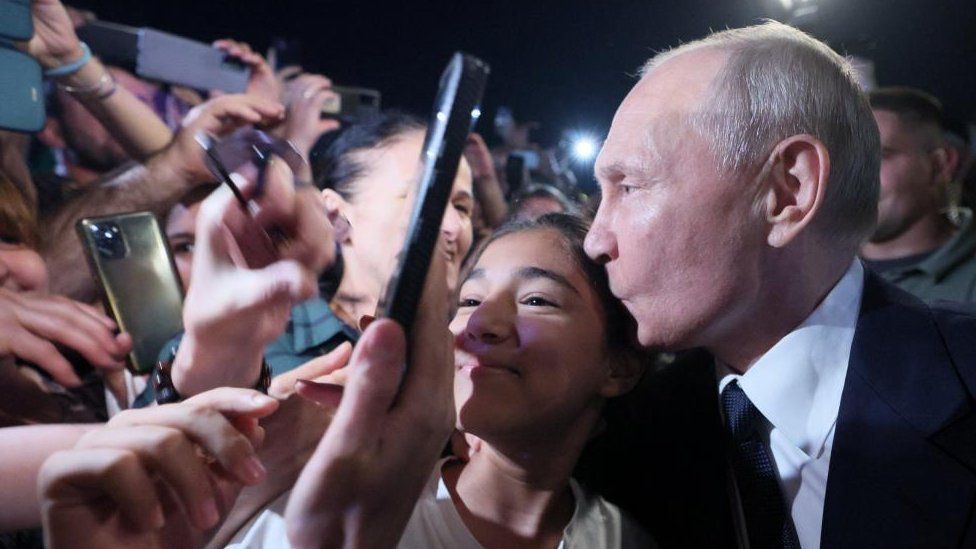
This is probably the most surprising Putin video of the week – perhaps of the year. That’s because it’s a very un-Putin-like Putin we see, in terms of getting up close and personal with the crowds.
The official reason President Putin is visiting Dagestan is to chair a meeting on domestic tourism.
But it’s not the meeting that dominates news bulletins later on Russian TV. It’s the crazy scenes that follow.
The Kremlin leader is shown being mobbed by an adoring crowd in the city of Derbent.
We’ve grown used to seeing Vladimir Putin keeping his distance from those he comes into contact with. Remember those long Kremlin tables with Putin seated safely at one end and his guests at the other?
Not here. In Dagestan he’s kissing children, hugging women, shaking hands and posing for photos.
State TV laps it up.
“Screaming, squealing, applause,” exclaims the presenter of a popular talk show on the Russia-1 channel. “Even rock stars don’t get this kind of welcome. The West is scoffing that after Prigozhin’s mutiny the president has been weakened. This proves the opposite is the case.”
Putin’s behaviour seems so out of character. On the other hand, nothing feels particularly normal any more in Russia.
The Russian president had just survived an armed mutiny. Perhaps he feels the need to demonstrate – to the country, to the political elite, and to himself – that he still has supporters out there. A “spontaneous” expression of public adoration would fit the bill.
As I view these images, I suddenly remember what happened last weekend, after the deal was done to end the mutiny. As Wagner fighters led by Mr Prigozhin had left Rostov on Saturday night, they were cheered on the streets.
Has Vladimir Putin seen those images? Does he feel the need for his own “hero” moment?
We’ll probably never know.
Thursday: Standing ovation…and doodles
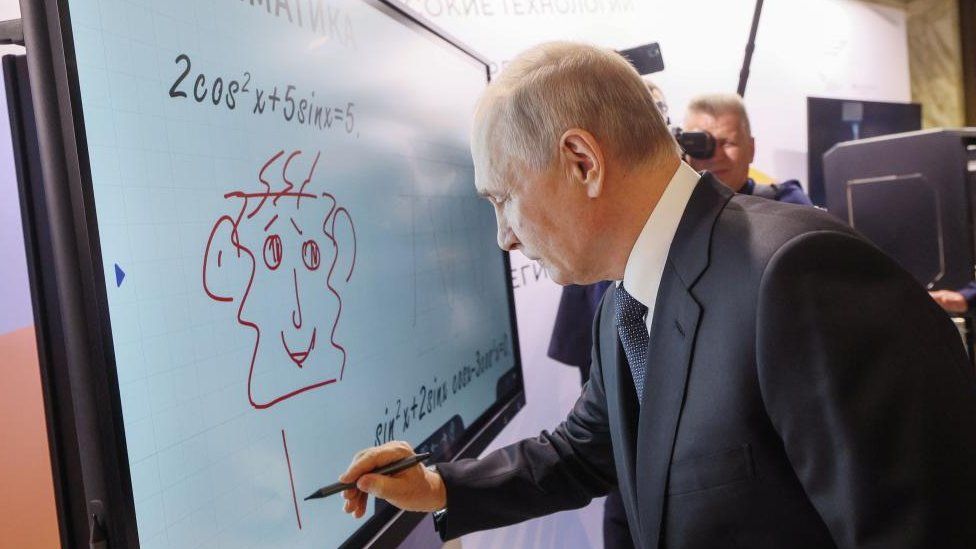
President Putin’s attending a business conference on Russian brands in Moscow. It doesn’t exactly make for another another rock-star moment.
Still, any opportunity to try to show (a) he’s in charge (b) he’s active (c) he has the support of the people.
The Russian president is applauded as he enters the hall. He sits down and listens to one of the organisers deliver opening remarks.
“Vladimir Vladimirovich, along with you and the whole country we, too, lived through the events of 24 June [the mutiny] with anxiety,” she says addressing Putin. “We are all with you and we all support you.”
As if to prove it, the delegates give Vladimir Putin a standing ovation.
From the same event, we see another slightly more bizarre video. President Putin is doodling on an interactive whiteboard.
The result is a cartoon-like red face with three strands of hair. A curious picture from a leader who has learnt the art of political survival.
Lines of loyal troops, gun salutes, screaming fans and a standing ovation. With these kinds of images, the Kremlin leader is trying to show he’s back in control.
He even has time to doodle. He must be feeling confident.
Following the mutiny, we’ve witnessed a turbo-charged Putin this week. He was here, he was there, he seemed to be everywhere. It was almost as if he’d kicked off his campaign for re-election (his presidential term expires next year).
But positive pictures do not change the fact that the rebellion had taken the Kremlin by surprise. It was a threat. The Wagner fighters had been well on their way to Moscow when the mutiny was called off. It was an unprecedented challenge to Putin’s authority.
And the long-term consequences of that are still unclear.
Related Topics
-
-
17 hours ago
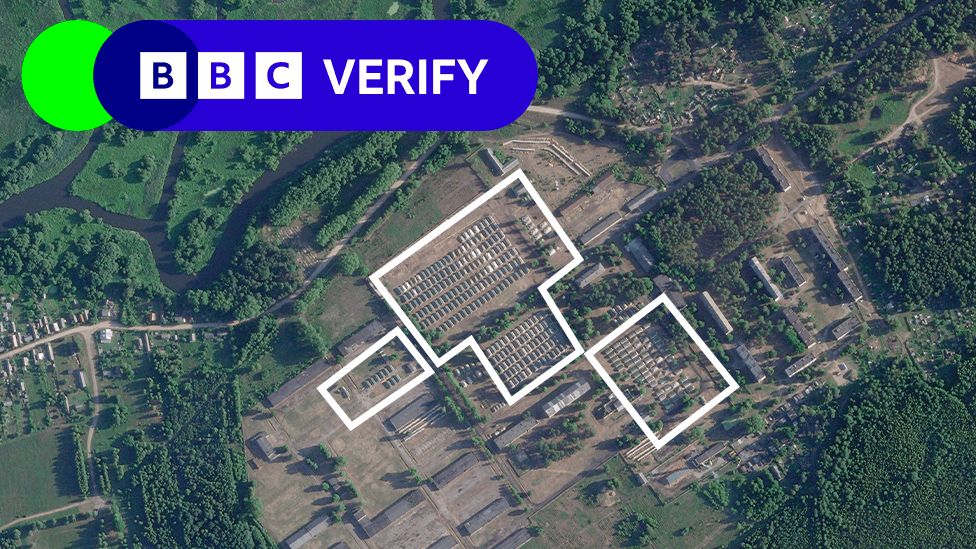
-
-
-
6 days ago
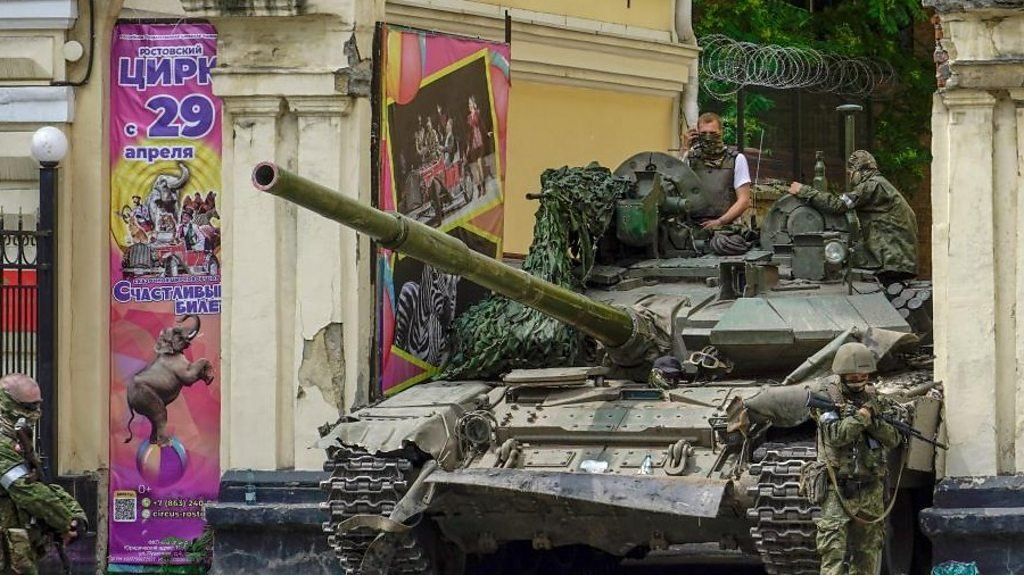
-
-
-
6 days ago
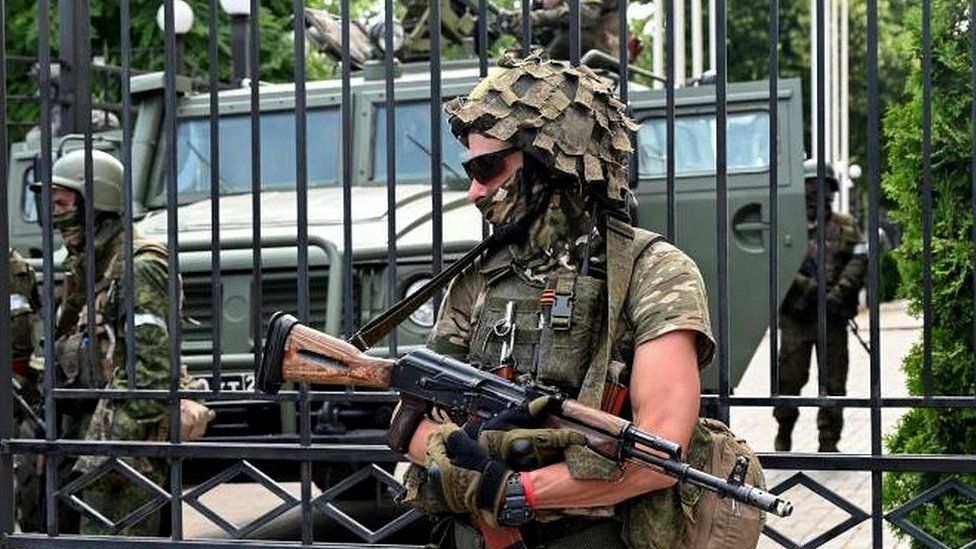
-
